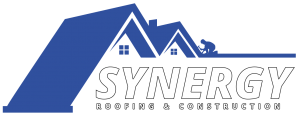Fiberglass Shingles New Orleans
Fiberglass shingles have a fire rating of Class A, making them a good choice for many residential buildings. They are made of a woven fiberglass mat and are coated with a waterproof asphalt layer and ceramic granules that block UV rays. Fiberglass is very strong and requires less asphalt to be durable, and it is also lighter than its organic counterparts. As a result, fiberglass shingles are much more energy efficient, lowering air conditioning costs.
Fiberglass shingles have a higher fire resistance rating than organic varieties. Because of their fire-resistance, these shingles can last a long time. The average life expectancy of these shingles is around twenty years. They are easy to install and usually come with a standard warranty.
Fiberglass shingles are slightly more expensive than organic asphalt shingles, but are still among the most affordable roofing materials. Costs can vary greatly depending on the size of the roof and the type of asphalt used. Prices can range from about $75 to $160 per square depending on the quality of the product and the company installing it. However, it is important to remember that the cost does not include the installation or labor.
There’s a lot of questions that homeowners will face when choosing the right roofing materials for their new home build, or roof remodel. This leads to quite a bit of confusion on the proper terminology, as well as what all the ‘roof jargon’ means. One popular point of confusion is the difference between fiberglass and asphalt shingles. Often these two terms will be used when considering roofing materials, but the use of these terms can be a head-scratcher. So, let’s dive into fiberglass versus asphalt shingles. If you are in New Orleans give us a call.
Fiberglass shingles require less asphalt
Fiberglass shingles are a great choice for a variety of reasons. They are more affordable than many other premium materials and require less asphalt to install. They also look identical to asphalt shingles. If you are concerned about the cost of asphalt shingles, a roof contractor can help you decide which type of shingle is best for your budget. These shingles are made from recycled and synthetic materials and have a longer lifespan than traditional asphalt shingles.
Fiberglass shingles are thin and require less asphalt than asphalt-based shingles. They’re also easier to install, and they cost one to three dollars less per square foot than asphalt-based shingles. In addition, they’re much more durable and lightweight than asphalt-based shingles.
Fiberglass shingles are cheaper than organic asphalt shingles. However, you can find higher-end versions of fiberglass shingles that cost twice as much as regular organic asphalt shingles. Fiberglass shingles are still more affordable than other types of shingles, and they’re easier to install than organic asphalt shingles.
- Fiberglass and Asphalt
The true shocker here might be that asphalt shingles and fiberglass shingles are technically the same thing. Yes, you read that correctly. The term ‘asphalt shingle’ is actually used to encompass two separate types of shingle–fiberglass and organic asphalt. So, when making the choice between fiberglass and asphalt, you are actually choosing between fiberglass and organic asphalt shingles.
Fiberglass shingles are made by composing the base out of woven fiberglass, and then sealing that mat with asphalt to waterproof it and coating that asphalt with ceramic pieces to ward away UV rays. By contrast, organic asphalt shingles are made with a recycled paper base which is double-coated in asphalt and then finished off with ceramic granules. In this case, the primary difference is the fact that organic asphalt shingles use almost 50% more asphalt than fiberglass shingles.
- The Comparison
There is actually very little difference between fiberglass shingles and organic asphalt shingles cosmetically. The main difference will boil down to more ‘sub-surface’ factors. Here is the general analysis of how they differ from each other.
- Fiberglass
Fiberglass shingles are almost always cheaper than organic asphalt shingles. This is mostly due to the fact that they require far less asphalt in their composition. Fewer materials = less cost. Fiberglass shingles are also more environmentally friendly due to this lack of excessive asphalt. However, they are less durable than organic asphalt shingles due to this very same reason.
- Organic Asphalt
The only clear-cut way that organic asphalt shingles beat out fiberglass is in longevity and durability. They are, simply put, a whole lot tougher than fiberglass shingles. This means that they will withstand inclement weather and harsh storms far better. In regions where harsh snows and storms are a regularity, this can make a world of difference. However, in terms of fire resistance, cost, and overall eco-friendly composition, organic asphalt falls short.
- The Verdict
Most homeowners going with asphalt shingles are going to want to go with fiberglass shingles. This is because they simply outperform organic asphalt shingles in almost every desirable metric. They look nearly identical and come in at a lower price while also edging out their ‘cousin’ in a number of other areas.
However, as mentioned above, if you live in an area that suffers particularly harsh weather, you might want to consider organic asphalt shingles still. When it comes to you roof, durability cannot be looked over. Although, barring this one factor, you are almost always going to want to go with fiberglass shingles.



